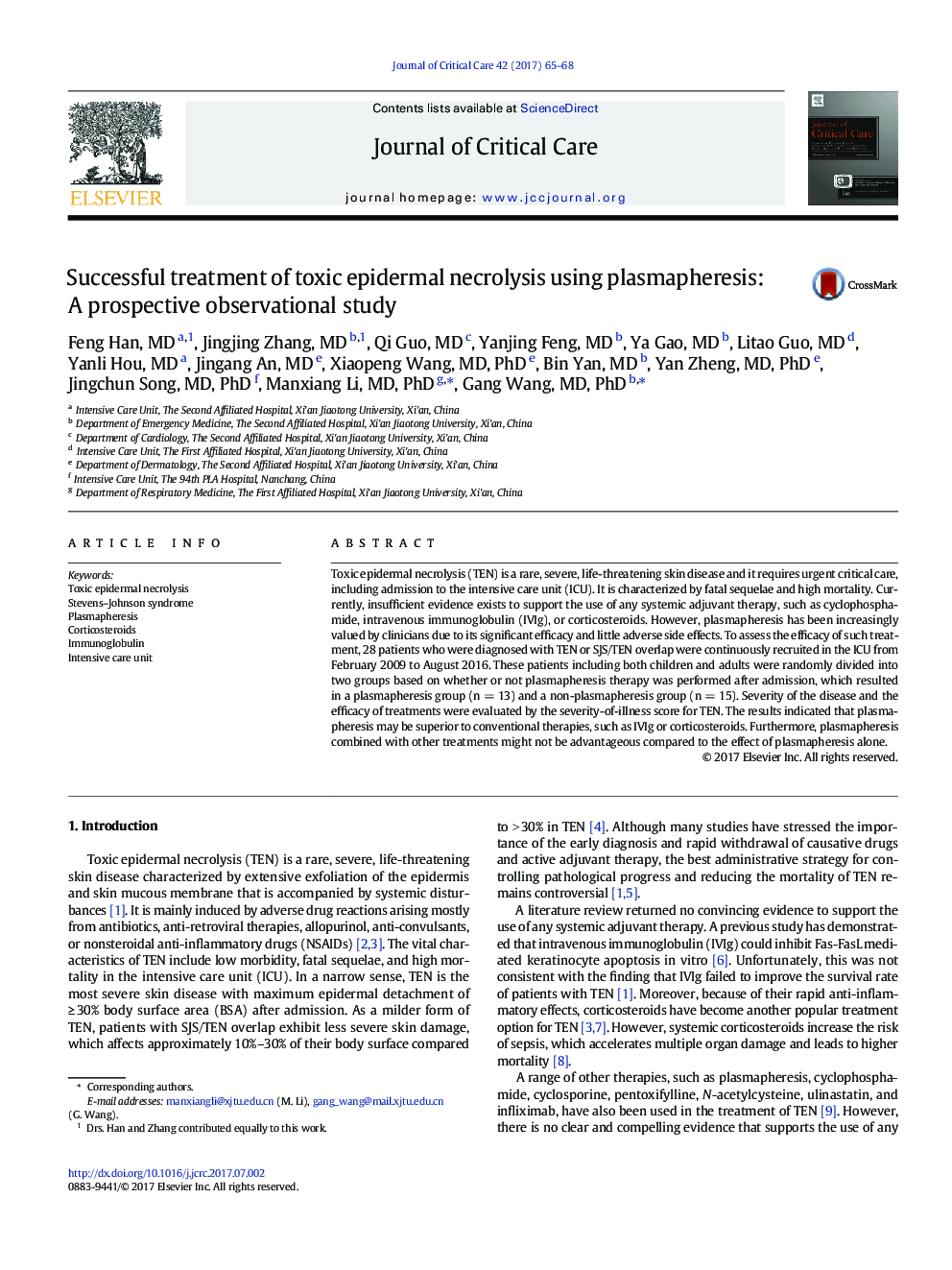| Article ID | Journal | Published Year | Pages | File Type |
|---|---|---|---|---|
| 5583318 | Journal of Critical Care | 2017 | 4 Pages |
Abstract
Toxic epidermal necrolysis (TEN) is a rare, severe, life-threatening skin disease and it requires urgent critical care, including admission to the intensive care unit (ICU). It is characterized by fatal sequelae and high mortality. Currently, insufficient evidence exists to support the use of any systemic adjuvant therapy, such as cyclophosphamide, intravenous immunoglobulin (IVIg), or corticosteroids. However, plasmapheresis has been increasingly valued by clinicians due to its significant efficacy and little adverse side effects. To assess the efficacy of such treatment, 28 patients who were diagnosed with TEN or SJS/TEN overlap were continuously recruited in the ICU from February 2009 to August 2016. These patients including both children and adults were randomly divided into two groups based on whether or not plasmapheresis therapy was performed after admission, which resulted in a plasmapheresis group (n = 13) and a non-plasmapheresis group (n = 15). Severity of the disease and the efficacy of treatments were evaluated by the severity-of-illness score for TEN. The results indicated that plasmapheresis may be superior to conventional therapies, such as IVIg or corticosteroids. Furthermore, plasmapheresis combined with other treatments might not be advantageous compared to the effect of plasmapheresis alone.
Keywords
Related Topics
Health Sciences
Medicine and Dentistry
Anesthesiology and Pain Medicine
Authors
Feng MD, Jingjing MD, Qi MD, Yanjing MD, Ya MD, Litao MD, Yanli MD, Jingang MD, Xiaopeng MD, PhD, Bin MD, Yan MD, PhD, Jingchun MD, PhD, Manxiang MD, PhD, Gang MD, PhD,
